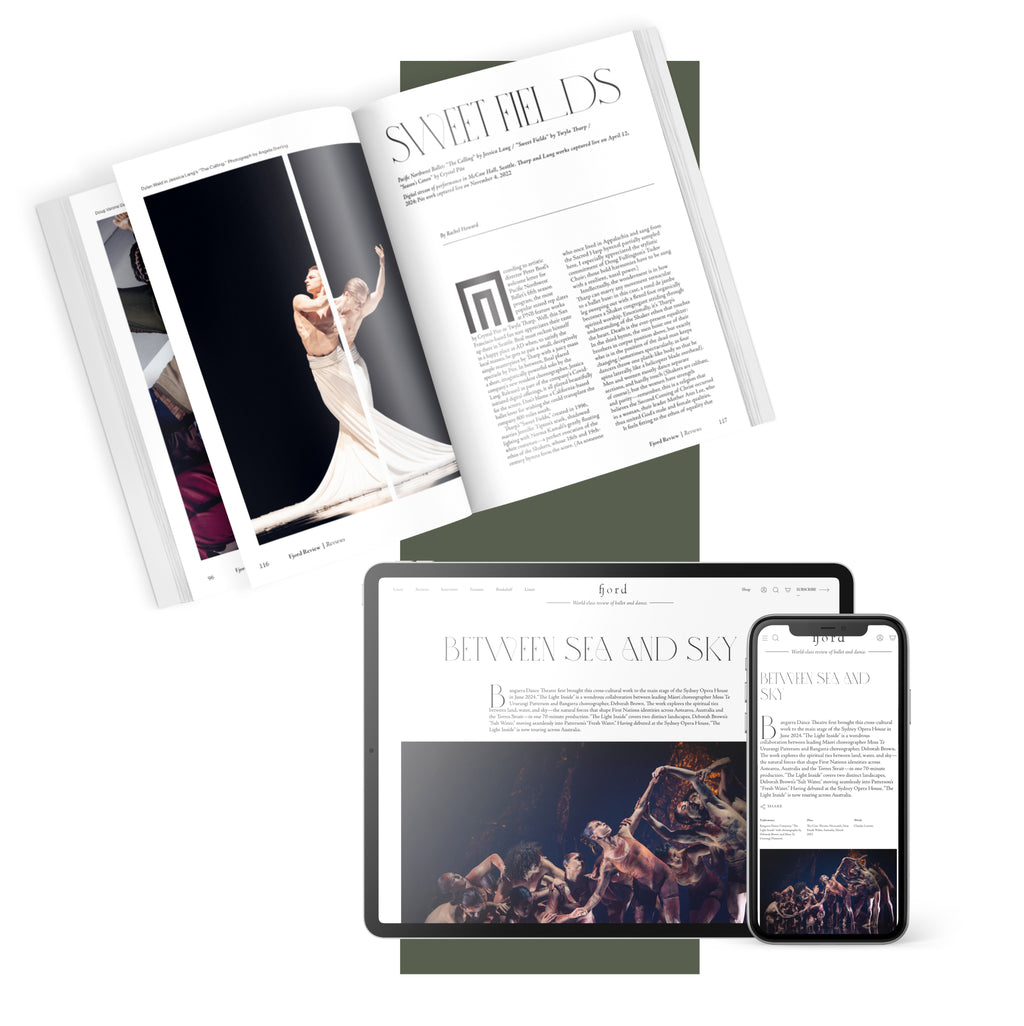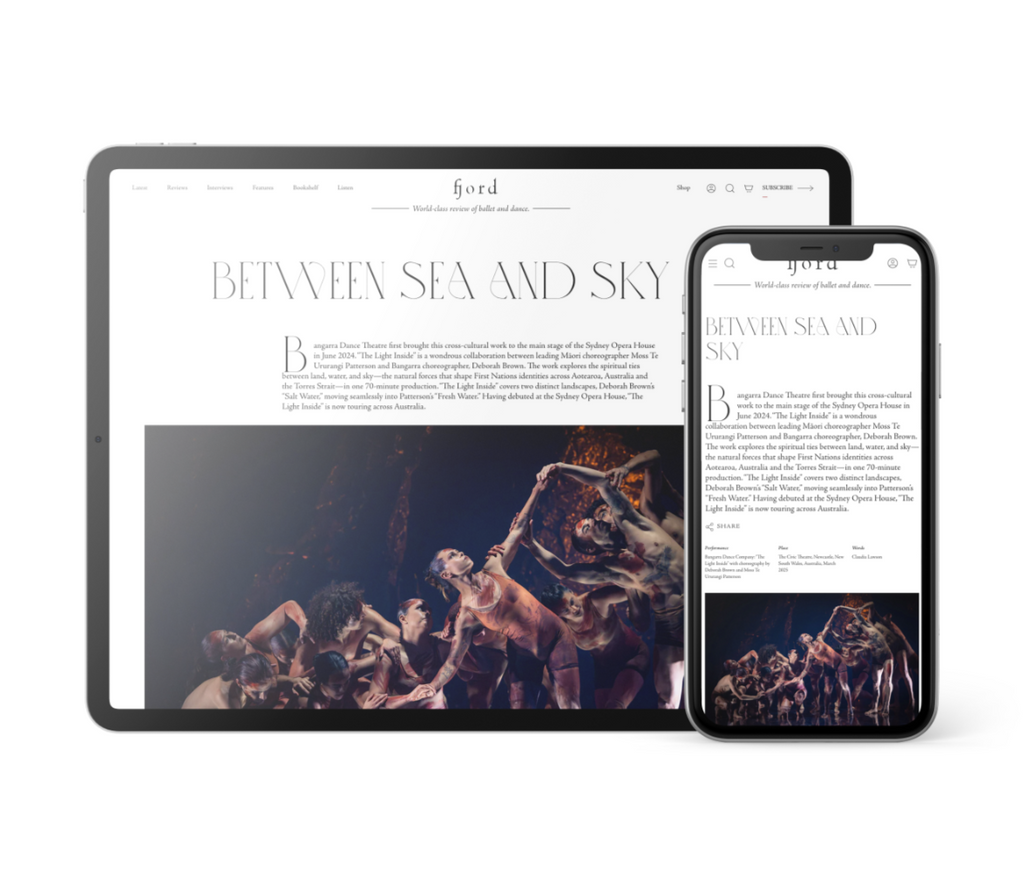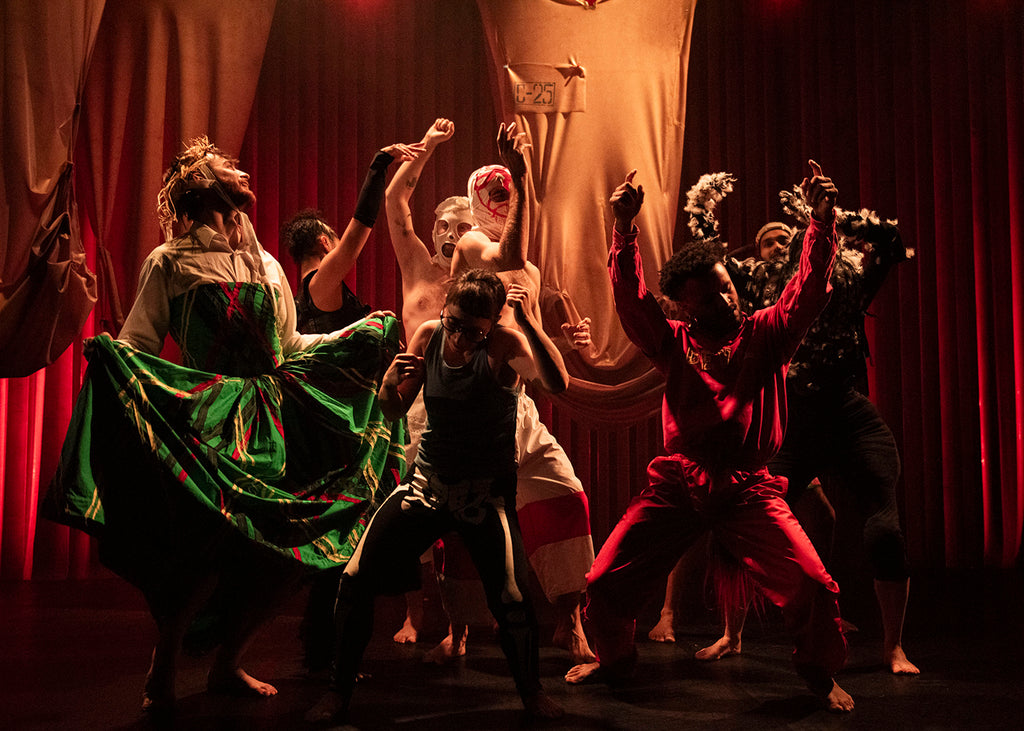I caught up with Oona, now based in Marseille, from her sunny apartment. Her accent is a musical blend of London and Belfast, with a pitch that rises and falls—occasionally breaking for a chuckle when something amuses her. One such thing is the timing of “Specky Clark’s” inception, “at the same time I was making it, I moved to Marseille. I thought I’d make a thing about Ireland the way Irish writers do: they move to France and then they write about home!” She’s warmly frank, a world away from ‘raw’—a word many critics use when describing her work.
This conversation has been edited for clarity.
Is ‘raw’ a label that you’re comfortable with?
I don't mind. Yes, I think probably I am a bit raw rather than refined as a person, so it would make sense that my dancing and work is like that. You can call it whatever you like—just buy a ticket.
Your work, notably, uses a lot of spoken text. What got you interested in that?
I started to shout poetry with a stutter way back in 2013 or 2014 with the dance group T.R.A.S.H. in the Netherlands for a character called Wheelbarrow Woman. Long story, but basically, I just never stopped. It's nice to use everything you’ve got to try and express the feeling or the idea. Like mixing form, cinema, dancing, theatre, and performance art. Whatever, just mix it all up, get the feeling out clear and sincere.
The playwright Enda Walsh is credited as a dramaturg for “Specky Clark.” Did he help with your writing for the text?
Enda did help me—I was trying to write a play. I actually first wrote to Blindboy Boatclub from the Rubberbandits.
No way.
Yeah! I'm obsessed with him, and a lot of the inspiration for the work came from the Blindboy Podcast. I’ve listened to every episode ever, and some of them more than once. At some points I was like, ‘is this an original idea or just an episode of the Blindboy Podcast?’ and I got really upset. But I thought, it’s fine if it takes from that, I’m making a contemporary dance show. So, I wrote to him, because I wanted the final scene to be all the people from Irish history and mythology that I thought were cool having a big chat together. I thought ‘well, I’m trying to be a writer but I’m not quite there yet.’ I asked him to be a co-writer but he declined. So then I wrote to Enda Walsh [she chuckles] being like, ‘Blindboy said no to me! Will you be a co-writer? and Enda like, god bless him, was like ‘fuck off!’ But he said to me he would be a mate and read it and do a Zoom with me, and he’d tell me honestly what he thought. He came up with loads of ideas and asked loads of questions, and he was very honest. I was trying to make it funny, and Enda was like ‘the funniest thing about this show is that you’ve moved to France and you’re trying to write this play. That’s what’s funny, not what the characters are doing!’ [she laughs].











comments